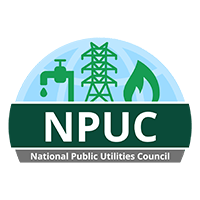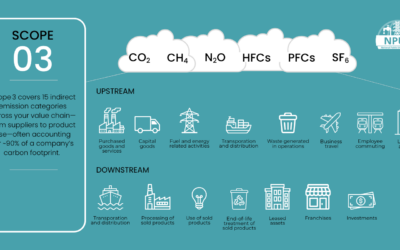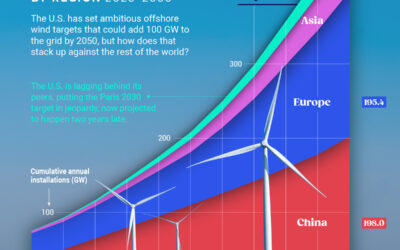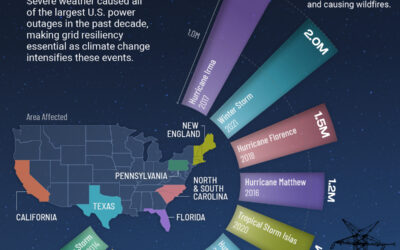
Tracked: The US Utilities ESG Report Card
As emissions reductions and sustainable practices become more important for electrical utilities, environmental, social, and governance (ESG) reporting is coming under increased scrutiny.
Once seen as optional by most companies, ESG reports and sustainability plans have become commonplace in the power industry. In addition to reporting what’s needed by regulatory state laws, many utilities utilize reporting frameworks like the Edison Electric Institute’s (EEI) ESG Initiative or the Global Reporting Initiative (GRI) Standards.
But inconsistent regulations, mixed definitions, and perceived importance levels have led some utilities to report significantly more environmental metrics than others.
How do U.S. utilities’ ESG reports stack up? This infographic from the National Public Utilities Council tracks the ESG metrics reported by 50 different U.S. based investor-owned utilities (IOUs).
What’s Consistent Across ESG Reports
To complete the assessment of U.S. utilities, ESG reports, sustainability plans, and company websites were examined. A metric was considered tracked if it had concrete numbers provided, so vague wording or non-detailed projections weren’t included.
Of the 50 IOU parent companies analyzed, 46 have headquarters in the U.S. while four are foreign-owned, but all are regulated by the states in which they operate.
For a few of the most agreed-upon and regulated measures, U.S. utilities tracked them almost across the board. These included direct scope 1 emissions from generated electricity, the utility’s current fuel mix, and water and waste treatment.
Another commonly reported metric was scope 2 emissions, which include electricity emissions purchased by the utility companies for company consumption. However, a majority of the reporting utilities labeled all purchased electricity emissions as scope 2, even though purchased electricity for downstream consumers are traditionally considered scope 3 or value-chain emissions:
- Scope 1: Direct (owned) emissions.
- Scope 2: Indirect electricity emissions from internal electricity consumption. Includes purchased power for internal company usage (heat, electrical).
- Scope 3: Indirect value-chain emissions, including purchased goods/services (including electricity for non-internal use), business travel, and waste.
ESG Inconsistencies, Confusion, and Unimportance
Even putting aside mixed definitions and labeling, there were many inconsistencies and question marks arising from utility ESG reports.
For example, some utilities reported scope 3 emissions as business travel only, without including other value chain emissions. Others included future energy mixes that weren’t separated by fuel and instead grouped into “renewable” and “non-renewable.”
The biggest discrepancies, however, were between what each utility is required to report, as well as what they choose to. That means that metrics like internal energy consumption didn’t need to be reported by the vast majority.
Likewise, some companies didn’t need to report waste generation or emissions because of “minimal hazardous waste generation” that fell under a certain threshold. Other metrics like internal vehicle electrification were only checked if the company decided to make a detailed commitment and unveil its plans.
As pressure for the electricity sector to decarbonize continues to increase at the federal level, however, many of these inconsistencies are roadblocks to clear and direct measurements and reduction strategies.




